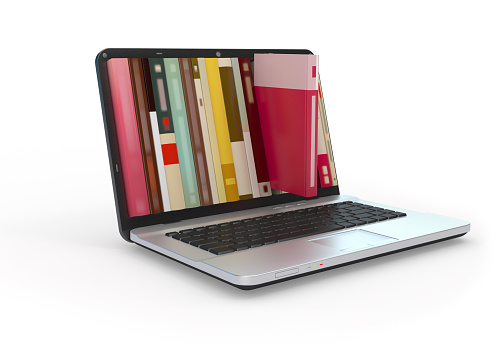My first thoughts when diving back into my world of Teacher Librarianship is that once again, I am hit with the overwhelming-ness that comes with the many hats a teacher librarian wears. When completing each course, I realize just how little I truly knew about my local librarian in the past. Theme one in this course overlooked the reference process, building and evaluating a collection and understanding the role of the internet in terms of reference services.
Reference Service
“The purpose of reference services is to align information to flow efficiently from reference sources to those who need it.” (Riedling, 5) I’m not sure I understood exactly what reference services were at the beginning of this course, however, as a teacher, I realized we already do something similar in our rooms with our students once it became clear. With the teacher librarian acting the part of the middleman (so to speak), its important that the information brought to the student, and the skills of the student are both considered. It’s a big job for a teacher librarian to know the information, and to understand the tools on getting it to the student (while also understanding the students needs and information literacy level). The AASL (American Association of School Librarians) released a list of standards for what reference services look like and the areas which librarians and students engage, especially in this new world of technology. Inquiry learning and information services are a big portion of these standards and if implemented allow librarians to lead their learning community.
I really enjoyed comparing different inquiry/research process models for one of our discussions. I’ve taken a deep interest in inquiry learning in my practice as a teacher and so it was interesting to compare multiple models. Mainly I use the Super 3 or the Points of Inquiry model developed by the BCTLA (British Columbias Teacher Librarian Association) or a variety of the two, but I also teach younger grades as well which limits which models to use. I liked looking into the higher process/more steps models because I am often asked by colleagues about using research processes with older students.
Building, and Maintaining a Reference Collection
Reflecting on the selection, and evaluation of references in a library collection, this is the one area that I have absolutely no experience in and the task itself feels very daunting. I appreciated having an assignment where I can practice evaluating a resource. In terms of weeding and being selective in a library collection, I feel I do this already in my classroom with my books. I very often look through a weed through books that are damaged, no longer relevant, above the reading ability I usually teach, etc. Using a criteria for this in future that Riedling’s book has laid out, will be helpful as I often just go by my own criteria.
“a good reference source is one that serves to answer questions…” (Riedling 17) This in a nutshell is what librarians need to go by when looking at building a collection and maintaining it. It was really interesting looking at a reference collection for assignment 1 and getting to dive in deeply to pick apart if it does answer questions or serve a purpose to give accurate information.
Print and or Electronic MaterialsI’m a generation where I did not have internet as a young child, but in my later years as a teen. The introduction of the internet has been an amazing thing, but it has also created some interesting dilemmas. In terms of library and references, the internet has allowed a mass amount of information available to us in such a simple way. This makes our job as librarians so much more difficult, because now we have mass amount of information that we have to evaluate for the use of our patrons/students. “The information issue today is not related to access or quantity. It’s more answers from authoritative sources” (Riedling 101) In the age where our libraries are becoming Learning Commons, the importance of teaching proper information searching skills, especially in regards to the internet has become very high. Now creating these both physical and virtual spaces is making a librarians job much bigger and more in depth. I’m someone who prefers print media and I am realizing that as a librarian that I need to set aside my bias for print and recognize the place for digital resources and media.
About Learning Commons in BC.
This video has a nice little summary of different learning commons in different levels of schools and why we need to start changing our libraries into Learning Commons.
Works Cited/References
image.
https://www.istockphoto.com/photo/digital-library-gm467916726-60669210?utm_source=unsplash&utm_medium=affiliate&utm_campaign=srp_photos_top&utm_content=https%3A%2F%2Funsplash.com%2Fs%2Fphotos%2Flibrary-internet&utm_term=library%20internet%3A%3A%3A.
Accessed 5 Feb 2022.
image. https://unsplash.com/photos/qmlGWIaIgpo. Accessed 5 Feb 2022.
BC Learning Commons. https://www.youtube.com/watch?v=LglFl1BYfFs. Accessed 5 Feb 2022.
"The Points Of Inquiry". BC Teacher-Librarians' Association, 2011, https://bctla.ca/resources/point-of-inquiry/.
"Home - National School Library Standards". National School Library Standards, 2022, https://standards.aasl.org/.
Riedling, Ann Marlow, and Cynthia Houston. Reference Skills For The School Librarian. 4th ed., Libraries Unlimited, 2019.





Thank you for the pineapple invitation! :-) I agree with you that every course highlights all that a TL does and what I still need to learn more about - especially in the area of navigating the online world of information and teaching others how to find what they are looking for. To age myself, I didn't grow up with the internet and didn't have it for several years into my teaching career. I have been learning alongside the students, which can be good in terms of modeling learning new skills, but could be tricky for supporting their learning and making sure that they had age-appropriate material to reference. Like you, I come to appreciate the evaluation skills and strategies in this course to help with good reference resource choices.
ReplyDelete